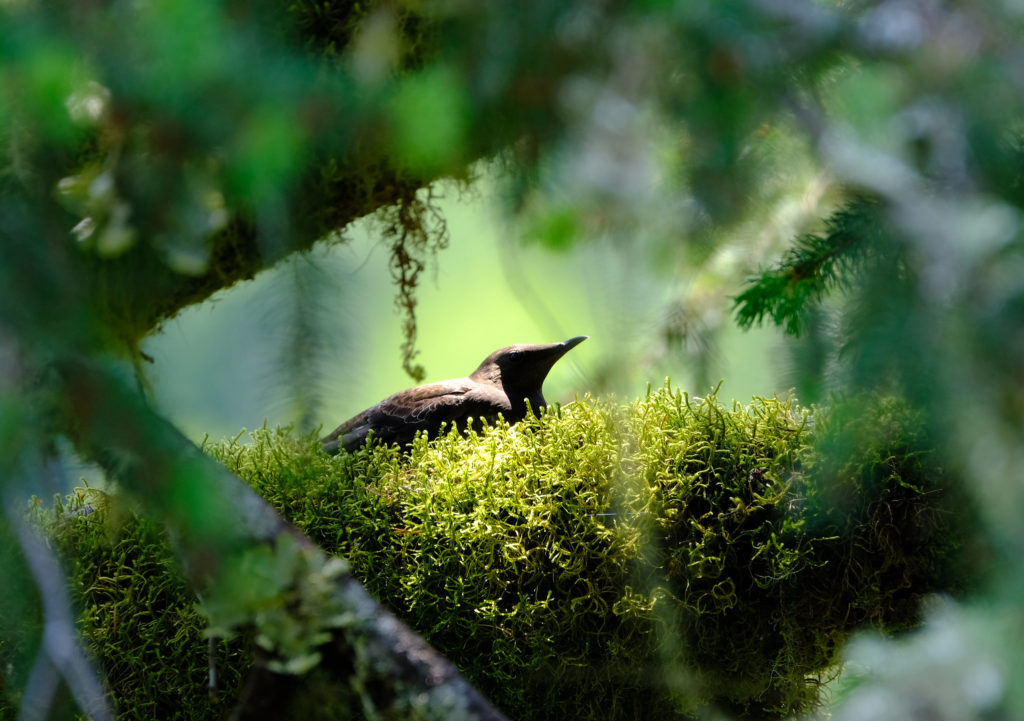

By APRIL ERHLICH/Oregon Public Broadcasting
Artificial intelligence tools are helping Oregon wildlife researchers study hard-to-reach threatened species like the marbled murrelet.
Researchers with Oregon State University and the U.S. Forest Service collected millions of hours of audio from federal forests in Washington and Oregon between 2018 and 2022.
“We cannot physically review all the audio data that we collect,” said OSU College of Forestry doctoral student Matthew Weldy. “So we are reliant on computational tools to filter this data set and find sounds of interest.”
To comb through that colossal amount of data, Weldy and other researchers developed a machine learning algorithm to identify the call patterns of marbled murrelets. Their findings — published this month in the Ecological Indicators journal — could help biologists understand which areas are most important to these enigmatic seabirds, thereby improving habitat conservation efforts.
Marbled murrelets raise their young among massive, old trees along much of the West Coast. Each adult female only produces one offspring a year. They’re listed as threatened under the U.S. Endangered Species Act, so federal regulators are required to protect them from harmful human activities like logging.
Traditional ways of surveying murrelets have been costly and time-consuming, according to OSU College of Forestry professor Matthew Betts.
“We have to go out in a ship to catch them,” Betts said. “Then we put radio transmitters on them and follow them into their nests. It’s just brutal.”
That amount of human activity could also influence their calling patterns.
With this new AI method, researchers strap audio recorders to trees in forests, then collect their memory cards every few weeks. It enables them to gather the birds’ natural calling patterns.
For this study, Betts and Weldy’s team used thousands of recorders that were originally installed to monitor northern spotted owls in the Oregon Coast Range and Washington’s Olympic Peninsula. Weldy plans to continue this type of research by creating algorithms to monitor about 140 other species.
“It’s a new era of data collection for us,” Weldy said. “Being able to uniformly sample over 100 species with a single monitoring effort is amazing for ecology.”
